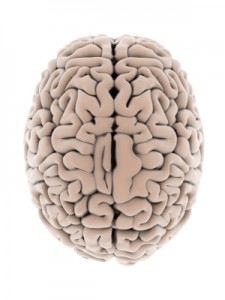Do you believe these neuromyths? Do we only use 10% of our brain?
November 16, 2012//Comments Off on Do you believe these neuromyths? Do we only use 10% of our brain?

Courtesy of the recent study Neuromyths in education: Prevalence and predictors of misconceptions among teachers, by Sanne Dekker et al, here you have 32 brain-related statements. Are they correct or incorrect?
- We use our brains 24 h a day (C ).
- Children must acquire their native language before a second language is learned. If they do not do so neither language will be fully acquired (I).
- Boys have bigger brains than girls (C ).
- If pupils do not drink sufficient amounts of water (=6–8 glasses a day) their brains shrink (I).
- It has been scientifically proven that fatty acid supplements (omega‑3 and omega‑6) have a positive effect on academic achievement (I).
- When a brain region is damaged other parts of the brain can take up its function (C ).
- We only use 10% of our brain (I).
- The left and right hemisphere of the brain always work together (C ).
- Differences in hemispheric dominance (left brain, right brain) can help explain individual differences amongst learners (I).
 The brains of boys and girls develop at the same rate (I).
The brains of boys and girls develop at the same rate (I).- Brain development has finished by the time children reach secondary school (I).
- There are critical periods in childhood after which certain things can no longer be learned (I).
- Information is stored in the brain in a network of cells distributed throughout the brain (C ).
- Learning is not due to the addition of new cells to the brain (C ).
- Individuals learn better when they receive information in their preferred learning style (e.g., auditory, visual, kinesthetic) (I).
- Learning occurs through modification of the brains’ neural connections (C ).
- Academic achievement can be affected by skipping breakfast (C ).
- Normal development of the human brain involves the birth and death of brain cells (C ).
- Mental capacity is hereditary and cannot be changed by the environment or experience (I).
- Vigorous exercise can improve mental function (C ).
- Environments that are rich in stimulus improve the brains of pre-school children (I).
- Children are less attentive after consuming sugary drinks and/or snacks (I).
- Circadian rhythms (“body-clock”) shift during adolescence, causing pupils to be tired during the first lessons of the school day (C ).
- Regular drinking of caffeinated drinks reduces alertness (C ).
- Exercises that rehearse co-ordination of motor-perception skills can improve literacy skills (I).
- Extended rehearsal of some mental processes can change the shape and structure of some parts of the brain (C ).
- Individual learners show preferences for the mode in which they receive information (e.g., visual, auditory, kinesthetic) (C ).
- Learning problems associated with developmental differences in brain function cannot be remediated by education (I).
- Production of new connections in the brain can continue into old age (C ).
- Short bouts of co-ordination exercises can improve integration of left and right hemispheric brain function (I).
- There are sensitive periods in childhood when it’s easier to learn things (C ).
- When we sleep, the brain shuts down (I).
Neuromyth assertions are presented in italic; C = correct; I = incorrect.
–> Want to see how teachers in the UK and Netherlands performed? Click HERE
Study: Neuromyths in education: Prevalence and predictors of misconceptions among teachers (Frontiers in Educational Psychology). From the Discussion about Prevalence of neuromyths:
- Overall, teachers agreed with 49% of the statements promoting myths indicating that they believed these myths. There was no significant difference in overall prevalence between countries [t(240) = 0.408, p = 0.684]. An analysis of the responses for each myth showed a lot of variation between the myths (see Table 1). Seven of the 15 myth statements were believed by more than 50% of the teachers. The most prevalent of these myths were (1) “Individuals learn better when they receive information in their preferred learning style (e.g., auditory, visual, kinesthetic)”, (2) “Differences in hemispheric dominance (left brain, right brain) can help explain individual differences amongst learners”, and (3) “Short bouts of co-ordination exercises can improve integration of left and right hemispheric brain function”. More than 80% of the teachers believed these myths. Other statements related to neuromyths were often successfully identified, e.g., “Individual learners show preferences for the mode in which they receive information (e.g., visual, auditory, kinesthetic)”. More than 80% of the teachers answered this statement correctly.
- Brain Gym (Brain Gym International, 2011), Learning Styles, and Left brain/Right brain learning programs were encountered significantly more often in schools in the UK than in the NL (see Table 2). More teachers from the UK than the NL followed in-service training. Dutch teachers read popular science magazines or scientific journals more often than teachers in the UK (see Table 2). There were significant differences between counties in teachers’ views on the role of genes and environment in learning. Teachers in the NL gave considerably greater weight to genes than teachers in the UK (34 vs. 22%). Teachers in the UK attributed more to home environment (46%) and school environment (29%), compared to Dutch teachers (resp. 30 and 25%).
Related article:
Posted in Education & Lifelong Learning
About SharpBrains
SHARPBRAINS is an independent think-tank and consulting firm providing services at the frontier of applied neuroscience, health, leadership and innovation.
SHARPBRAINS es un think-tank y consultoría independiente proporcionando servicios para la neurociencia aplicada, salud, liderazgo e innovación.


